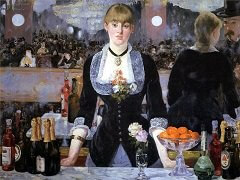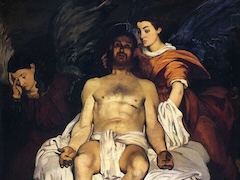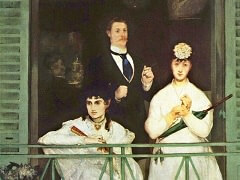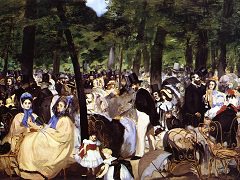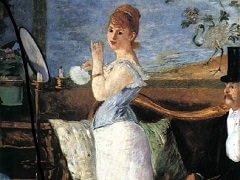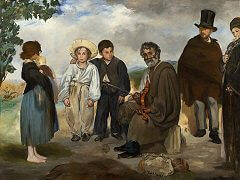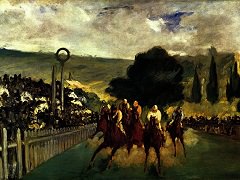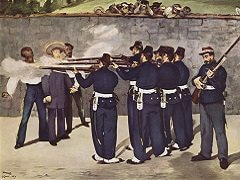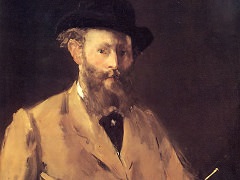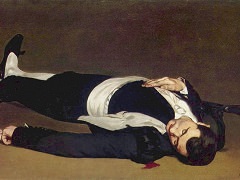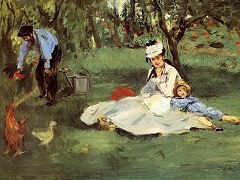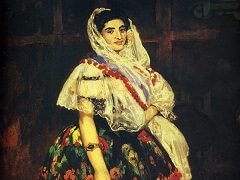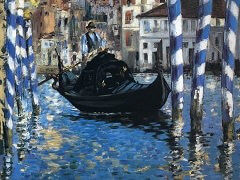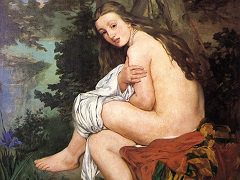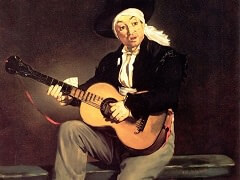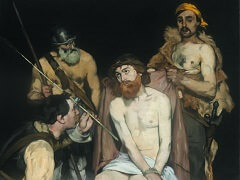Plum Brandy, 1877 by Édouard Manet
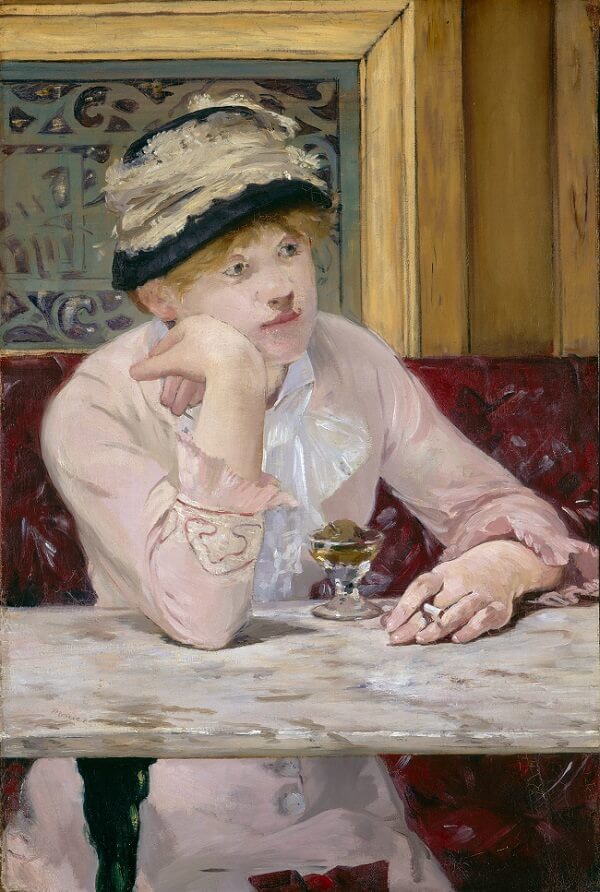
What is the situation of this young woman? Her cigarette suggests a certain impropriety - perhaps she is a prostitute waiting for a customer. Or, more likely, given her modest dress, she is only a shopgirl hoping for company. Manet's composition underscores her isolation. Our vantage point is close, as if we stand above her, but she is blind to our presence, lost in a pensive mood. The hard marble table acts as a bar between us. And her head is set off, framed by the grille behind her. The grille suggests that the setting may be the Café de la Nouvelle-Athénes where Manet gathered often with other members of the avant-garde, including writer Emile Zola and younger painters like Monet and Renoir.
It was Zola who drew attention to what is often called the "painted patch" style of Manet's work. Writing in 1867, he described it as "an ensemble of delicate, accurate taches ('touches' or 'patches') which, from a few steps back, give a striking relief to the picture." Notice how individual dabs of color create the plum in its glass and the fingers of the woman's left hand. These broad strokes, accepted by many younger artists as a badge of modernity, could only have been made with the sort of flat-tipped brushes familiar today - and these first became available in the nineteenth century.

